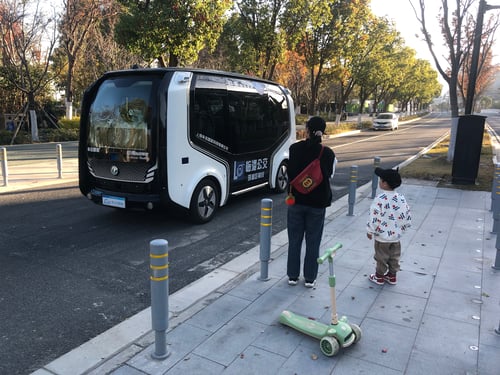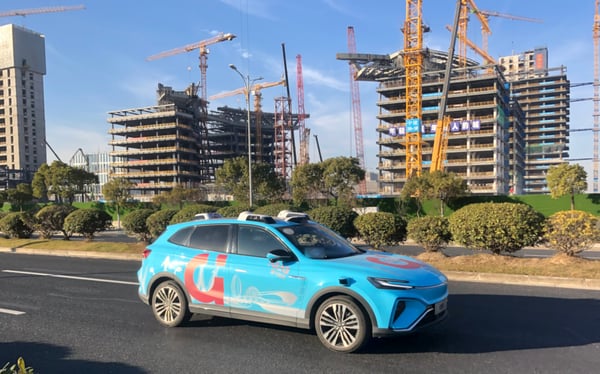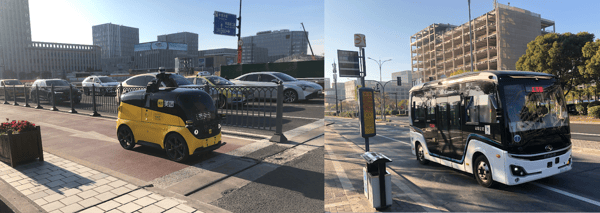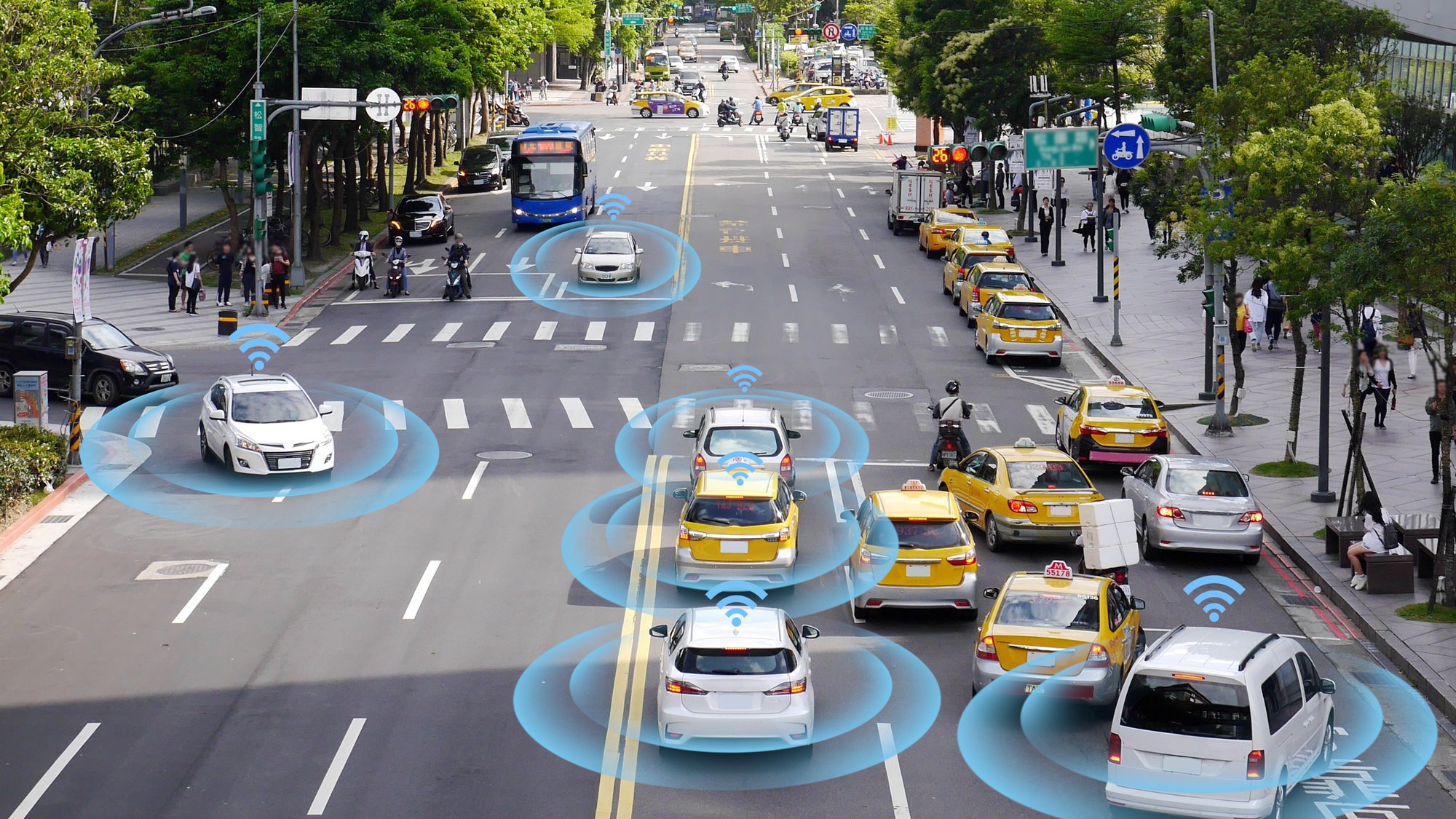Tales from the AI Silk Road - China's future tech scene
My family and I arrived in China on a red-eye flight from Sydney, Australia. While this was already my third visit to China this year, it was our first return to China since Covid. Exhausted from days of packing and travel we stumbled helplessly through the glistening arrivals area and towards ground transport. But with a mountain of luggage and 6 exhausted travelers how would we get to our new home?
Fortunately, in recent years China has raced into the digital era at an almost unmatched pace, leaving citizens and visitors with a rich array of digital conveniences. For my family this started with a fast one-text signup to local ride-hailing services. Even as we continued towards the exits, 2 shiny new all-electric 6-seaters were messaging to confirm their imminent arrival. Pulling up as we shuffled to the curb, both vehicles were a testament to China’s world leading smart-EV market. The first car was a well known brand while the second was one of China’s many new EV startups. Both featured massive center displays for entertainment and maps, as well as augmented reality head-up-displays rendering a view of the car’s AI perception at work
Driving away from the airport we already see China’s so-called smart-vehicle and smart-city initiatives at work. Stopping at a traffic light, you notice the map counting down the seconds it will change to green. Where previously you would see a standard digital roadmap visualization (think of Google or Apple Maps), you now see a centimeter accurate HD-map with lanes, road markings, and bridges, shown in vivid 3D.

A mother and son stop to watch an autonomous pod vehicle going by.
In 2017, on a visit to one of China’s largest digital map providers, I’d seen the beginnings of the construction of this so-called HD-Map, as 1000’s of employees worked to weave high-grade survey vehicle data into the world’s most complete digital map asset. Built for localization and path-planning in the Autonomous Driving future, this map already elevates China’s navigation apps. For example, driving on a 4-lane highway in China, you are guided by a helpful visualization showing which lanes are best suited for your planned route (no small thing if like me you often forget to prepare to exit by switching to the most approriate lane).
Finally, we arrived in our new home. Even here we see AI at work as number plate recognition scans in our vehicles while neighbors arriving on foot nod to face recognition systems before being welcomed home. As the kids run around to discover their new home we’re already ordering fruit, vegetables, and lunch via Wechat. These spontaneous orders usually arrive within a half hour. China truly has an amazing logistic network. Heading online to get more necessities, we are assured that most of what we want will arrive by 7pm today if I order before 11am.
 A regular sight, a SIAC Robotaxi passes in front of construction in the Shanghai Lingang Free Trade Zone. A banner in the background declares “Young City, Young People’s City”.
A regular sight, a SIAC Robotaxi passes in front of construction in the Shanghai Lingang Free Trade Zone. A banner in the background declares “Young City, Young People’s City”.
Our family has come to live in the Lingang New Area of Shanghai. A beautiful mostly Low-Rise development to the east of Shanghai. A series of government incentives and favorable policies have attracted several Autonomous Driving startups and large OEM’s to set up research and field testing here. Autonomous EV’s mix seamlessly with those of us still driving manually. Autonomous trams, buses, and pod vehicles all circle the neighborhood. One of the taller buildings in our area shows a proud logo for CATL - a behemoth with 37% of the global EV battery market - they make the safest and longest range batteries for the likes of VW, BMW, Nissan, and the giant Tesla Gigafactory down the road in Lingang.
 Left: A “Meituan” autonomous delivery vehicle branded for the World AI Conference 2023 waits at an intersection. Right: An autonomous bus makes a regular stop around Dishui Lake in Lingang. This area has special incentives for AI companies to use it as a proving ground for their systems.
Left: A “Meituan” autonomous delivery vehicle branded for the World AI Conference 2023 waits at an intersection. Right: An autonomous bus makes a regular stop around Dishui Lake in Lingang. This area has special incentives for AI companies to use it as a proving ground for their systems.
Kognic is a company built to meet the AI data needs of the world’s most demanding OEM’s and Tier-1’s. Many of these are increasingly seeing China as a hotbed for innovation and competition. 2024 and 2025 in particular will see several international and local brands hitting their SOP (Start-Of-Production) dates - each of these in turn needs the best data possible to improve their product and prove its performance to regulators. Many have already begun the process of sourcing data in China and now seek to turn the corner from just creating more training data to managing, curating, and improving that training data for their China specific needs.
China’s Baidu Maps application uses real-time traffic light information from its smart cities initiatives to show traffic light timing. Built to help Automated vehicles it is also a useful feature for smoothing traffic and increasing safety.
China is racing ahead in the Autonomous Driving race. Several favorable policies mean that the world's best companies are engaging here. The road to fully autonomous driving is still being paved, and so producing the best possible data tailored for, the current challenges, the long tail corner cases, and to satisfy regulators, will be a core part of paving that success. As a company passionate about data from its inception Kognic plans to be alongside the best, smoothing the way with the data needed to support the future of Embodied AI, on roads, in factories, and more.
China has constructed the largest and most complete HD Map digital asset in the world. The centimeter accurate map is designed for Autonomous Driving, however, its digital representation of the road scene already elevates its utility as a navigation aid. In particular, its path planning and lane guidance is a great help to drivers on China’s multi-lane road system.
Share this
Written by

.png?width=2000&name=kognic%20logo-black%20(1).png)

